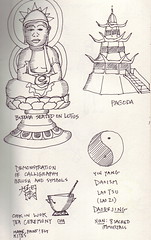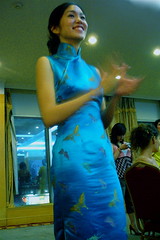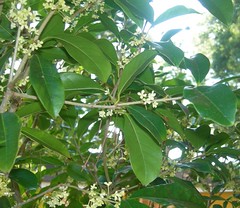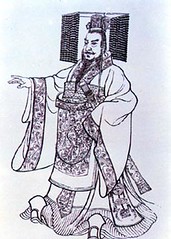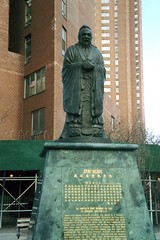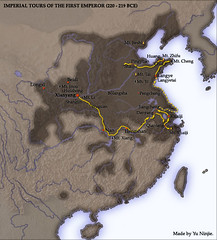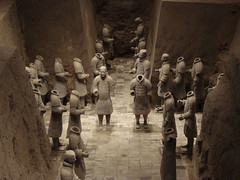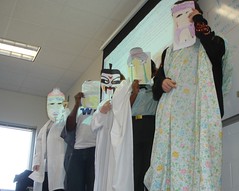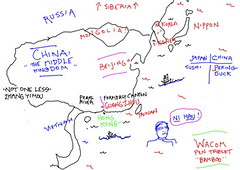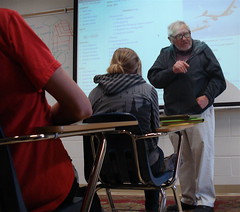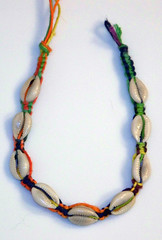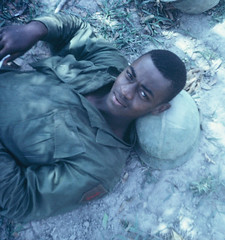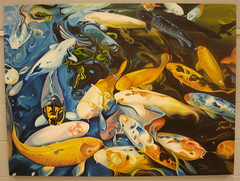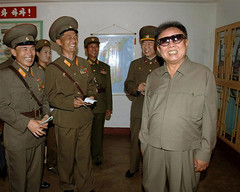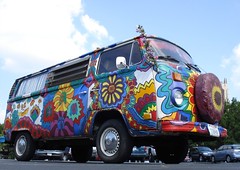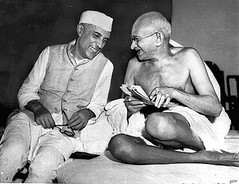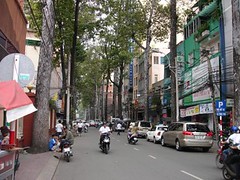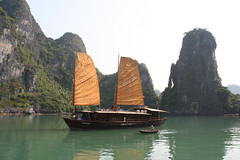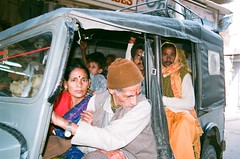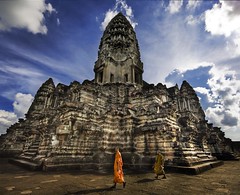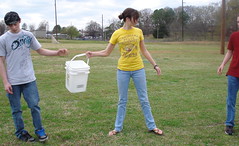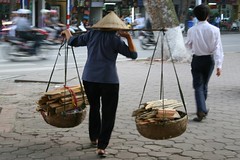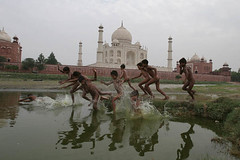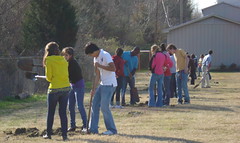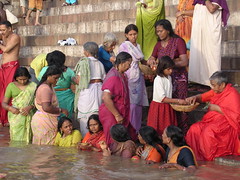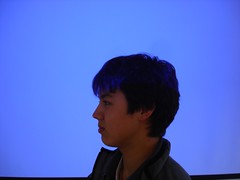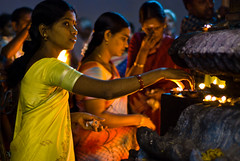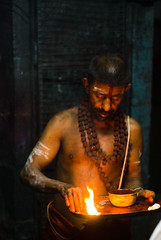China review 2 / Trudeau
1. Ethics is concerned with a) practicality b) morality
c) visibility d) Asian ability.
2. Ethics was the principal concern of a) Master Kong
b) Qin Shi Huang Di c) Ho Chi Minh d) LBJ.
3. Always try to “Do unto others before they do unto you.”
This aphorism would be associated with a) Confucius b) Qin Shi Huangdi.
4. “Familial loyalty” has to do with the a) ruler b) family
c) business men d) friends.
5. Rather than aristocratic parentage, Confucius wanted rulers who were strong in a) wealth b) decision-making
c) innovation d) morality.
6. Confucius wanted to see rulers who guided the state by
a) decisive commands b) ancient wisdom c) example.
7. Qin Shi Huangdi’s capital was a) Beijing b) Xi’an
c) Shanghai d) Cathay.
8. The southernmost city of China: a) Beijing b) Xi’an
c) Shanghai d) Hong Kong.
9. The Yangtze is also known as the a) Huang b) Chang
c) Middle Kingdom d) Pearl.
10. “Ni hau!” This is a greeting in the __ language.
a) Mandarin Chinese b) Cantonese Chinese c) Vietnamese d) Pekingese Chinese.
Tuesday, March 31, 2009
Monday, March 30, 2009
Mandarin collar, silk dress decorated with embroidery: Chinese style is classic
The traditional, shiny silk, fitted dress of China is known as a qipao or cheongsam. It has a stand-up collar called a Mandarin collar and the top's opening is often fastened with a loop-and-knot type of button. It may have a high slit along the thigh.
Variations of the qipao are considered a classic style whether in Paris, NYC or Buenos Aires.
Variations of the qipao are considered a classic style whether in Paris, NYC or Buenos Aires.
Sunday, March 29, 2009
iLeap testing Wed-Th-Fr; please: cells & cameras not allowed in testing rooms
The Mar 30 - Ap 3 week will finish with 3 days of high-stakes testing.
Cmhs wants no compromises of testing guidelines thus we are emphasizing no cells and no cameras in testing rooms. The best solution to this 3-day inconvenience? Please leave phones (which include cameras) at home.
How did we exist before cells? There are phones available In The Office!
Wed, 4/1
8:25 - noon 9th grade iLEAP - math
Afternoon will see regular classes at periods 4, 5 and 6.
Th, 4/2
8:24 - noon 9th - English
Afternoon classes: 1, 2 and 3.
Fr, 4/3
8:25 - 11:50 9th English Language Arts
Afternoon: 4, 5 and 6.
In Geography Class on Mon - Tues:
- 10 item open-notes quiz Tuesday on Emperor Qin Shi Hung and Confucius.
- making Chinese masks
- writing dialogue for the Qin Shi Huang / Confucius skits.
Indie Work:
- comparison essay on Siddhartha Gautama, the Buddha, and Master Kung Fu Tzu, or Confucius.
Cmhs wants no compromises of testing guidelines thus we are emphasizing no cells and no cameras in testing rooms. The best solution to this 3-day inconvenience? Please leave phones (which include cameras) at home.
How did we exist before cells? There are phones available In The Office!
Wed, 4/1
8:25 - noon 9th grade iLEAP - math
Afternoon will see regular classes at periods 4, 5 and 6.
Th, 4/2
8:24 - noon 9th - English
Afternoon classes: 1, 2 and 3.
Fr, 4/3
8:25 - 11:50 9th English Language Arts
Afternoon: 4, 5 and 6.
In Geography Class on Mon - Tues:
- 10 item open-notes quiz Tuesday on Emperor Qin Shi Hung and Confucius.
- making Chinese masks
- writing dialogue for the Qin Shi Huang / Confucius skits.
Indie Work:
- comparison essay on Siddhartha Gautama, the Buddha, and Master Kung Fu Tzu, or Confucius.
Friday, March 27, 2009
The Middle Kingdom: notes
Qin Shihuang di said to his Minister of Defense today: "Master Kong's writings are antithetical to my dogma. What might we do about that?"
The Minister therefore issued an invitation to Confucius to trek to Xi'an to meet with the Emperor. The powerful men's explanations of their philosophies of ruling led them to an inescapable conclusion: one of them must die.
That is the premise of our skits.
The map of
* Cathay
* the Middle Kingdom
* Empire of Qin
* aka China . . .
1. Beijing (Peking)
2. Xi'an (Chang'an)
3. Shanghai
4. Guangzhou (canton)
5. Hong Kong
6. Yellow River (Huang)
7. Yangtze River (Chang)
8. Mongolia
9. Russia
10. India
Vocab -
- Pekingese
- Japanese Chin
- dog breeds originating in China
- Peking Duck
- Hoisin sauce
- wok
- Mandarin Chinese language ("Ni hau!")
- Cantonese " "
The Minister therefore issued an invitation to Confucius to trek to Xi'an to meet with the Emperor. The powerful men's explanations of their philosophies of ruling led them to an inescapable conclusion: one of them must die.
That is the premise of our skits.
The map of
* Cathay
* the Middle Kingdom
* Empire of Qin
* aka China . . .
1. Beijing (Peking)
2. Xi'an (Chang'an)
3. Shanghai
4. Guangzhou (canton)
5. Hong Kong
6. Yellow River (Huang)
7. Yangtze River (Chang)
8. Mongolia
9. Russia
10. India
Vocab -
- Pekingese
- Japanese Chin
- dog breeds originating in China
- Peking Duck
- Hoisin sauce
- wok
- Mandarin Chinese language ("Ni hau!")
- Cantonese " "
Qin Shihuang Di, the first Emperor
Qin Shi Huangdi remains a controversial figure in Chinese history, says Wikipedia.
After unifying China, he and his chief adviser Li Si passed a series of major economic and political reforms.[3] He undertook gigantic projects, including the
- first version of the Great Wall of China, the
- famous city-sized mausoleum guarded by a life-sized Terracotta Army, and a
- massive national road system, all at the expense of many lives. To ensure stability, Qin Shi Huang
- outlawed Confucianism and
- buried many scholars alive.[4] All
- books other than those officially decreed were banned and burned in what is known as the great Confucian purge. Despite the
- tyranny of his autocratic rule, Qin Shi Huang is regarded as an important figure.
Qin Shi Huang and his prime minister Li Si completely abolished feudalism. The administration was now
- based on merit instead of hereditary rights.
Qin Shi Huang and Li Si unified China economically by
- standardizing the Chinese units of measurements such as
- weights and measures, the
- currency, the
- length of the axles of carts to facilitate transport on the road system.[25] The emperor also developed an extensive
- network of roads and canals connecting the provinces to
- improve trade between them.[25] The currency of the different states were also standardized to the Ban liang coin (半兩).[24] Perhaps most importantly, the
- Chinese script was unified.
After unifying China, he and his chief adviser Li Si passed a series of major economic and political reforms.[3] He undertook gigantic projects, including the
- first version of the Great Wall of China, the
- famous city-sized mausoleum guarded by a life-sized Terracotta Army, and a
- massive national road system, all at the expense of many lives. To ensure stability, Qin Shi Huang
- outlawed Confucianism and
- buried many scholars alive.[4] All
- books other than those officially decreed were banned and burned in what is known as the great Confucian purge. Despite the
- tyranny of his autocratic rule, Qin Shi Huang is regarded as an important figure.
Qin Shi Huang and his prime minister Li Si completely abolished feudalism. The administration was now
- based on merit instead of hereditary rights.
Qin Shi Huang and Li Si unified China economically by
- standardizing the Chinese units of measurements such as
- weights and measures, the
- currency, the
- length of the axles of carts to facilitate transport on the road system.[25] The emperor also developed an extensive
- network of roads and canals connecting the provinces to
- improve trade between them.[25] The currency of the different states were also standardized to the Ban liang coin (半兩).[24] Perhaps most importantly, the
- Chinese script was unified.
The Empathy and Ethics of Confucius
Confucius' philosophy emphasized personal and governmental morality, correctness of social relationships, justice and sincerity, says Wikipedia.
He championed strong familial loyalty, ancestor worship, respect of elders by their children (and, according to later interpreters, of husbands by their wives), and the family as a basis for an ideal government.
He expressed the well-known principle, "Do not do to others what you do not want done to yourself" (similar to the Golden Rule).
He envisioned a unified royal state, whose rulers would succeed to power on the basis of their moral merit, not their parentage. These would be rulers devoted to their people, reaching for personal and social perfection.[30] Such a ruler would spread his own virtues to the people instead of imposing proper behavior with laws and rules.[31]
One of the deepest teachings of Confucius may have been the superiority of personal exemplification over explicit rules of behavior. Because his moral teachings emphasize self-cultivation, emulation of moral exemplars, and the attainment of skilled judgment rather than knowledge of rules, Confucius's ethics may be considered a type of virtue ethics.
This social philosopher's teachings have deeply influenced Chinese, Korean, Japanese, Taiwanese and Vietnamese thought and life.
He championed strong familial loyalty, ancestor worship, respect of elders by their children (and, according to later interpreters, of husbands by their wives), and the family as a basis for an ideal government.
He expressed the well-known principle, "Do not do to others what you do not want done to yourself" (similar to the Golden Rule).
He envisioned a unified royal state, whose rulers would succeed to power on the basis of their moral merit, not their parentage. These would be rulers devoted to their people, reaching for personal and social perfection.[30] Such a ruler would spread his own virtues to the people instead of imposing proper behavior with laws and rules.[31]
One of the deepest teachings of Confucius may have been the superiority of personal exemplification over explicit rules of behavior. Because his moral teachings emphasize self-cultivation, emulation of moral exemplars, and the attainment of skilled judgment rather than knowledge of rules, Confucius's ethics may be considered a type of virtue ethics.
This social philosopher's teachings have deeply influenced Chinese, Korean, Japanese, Taiwanese and Vietnamese thought and life.
Wednesday, March 25, 2009
Master Kung: the Confucius quiz
Semester exam review / world geography / Trudeau
1. In Chinese language the name Confucius would be rendered as a) Lao Tzu b) Master Kung c) Tai Chi
d) the Buddha.
2. Confucius should be classified as a a) social thinker
b) religious leader.
3. He lived about the the year a) 500 BCE b) 300 BCE
c) 300 AD d) 500 AD.
4. There was little or no difference between the philosophy of Confucius and Shi Huang Di. T / F
5. There was little or no difference between the philosophy of Confucius and the ancient guidelines of Taoism. T / F
6. Confucius occupation was a) governmental minister b) prince c) king d) wise pauper.
7. Confucius basically was in favor of a) democracy
b) monarchy c) oligarchy (rule by a small group of men) d) rule by tyrant.
8. He thought that aristocratic parentage was the key to a wise ruler. T / F
9. His ideal ruler was one who “would spread his own virtues to the people instead of imposing proper behavior with laws and rules.” T / F
10. “Never impose on others what you would not choose yourself.” a) Buddha b) Confucius c) Shi Huang Di.
11. Confucianism is about a) ethics b) ethnics c) ethnocentrism d) ethylism.
1. b 2. a 3. a 4. F 5. F 6. a 7. b 8. F 9. T 10. b 11. a
1. In Chinese language the name Confucius would be rendered as a) Lao Tzu b) Master Kung c) Tai Chi
d) the Buddha.
2. Confucius should be classified as a a) social thinker
b) religious leader.
3. He lived about the the year a) 500 BCE b) 300 BCE
c) 300 AD d) 500 AD.
4. There was little or no difference between the philosophy of Confucius and Shi Huang Di. T / F
5. There was little or no difference between the philosophy of Confucius and the ancient guidelines of Taoism. T / F
6. Confucius occupation was a) governmental minister b) prince c) king d) wise pauper.
7. Confucius basically was in favor of a) democracy
b) monarchy c) oligarchy (rule by a small group of men) d) rule by tyrant.
8. He thought that aristocratic parentage was the key to a wise ruler. T / F
9. His ideal ruler was one who “would spread his own virtues to the people instead of imposing proper behavior with laws and rules.” T / F
10. “Never impose on others what you would not choose yourself.” a) Buddha b) Confucius c) Shi Huang Di.
11. Confucianism is about a) ethics b) ethnics c) ethnocentrism d) ethylism.
1. b 2. a 3. a 4. F 5. F 6. a 7. b 8. F 9. T 10. b 11. a
Qin Shi Huang's China
Qin Shi Huang Di quiz 1
1. The life of Shi Huang Di: a) 1200 BCE b) 200 BCE c) 200 AD d) fictitious.
2. Shi Huang Di’s version of the Great Wall was called a “precursor” to the later Great Wall. Precursor means
a) small version b) earlier example c) moveable pointer
3. Tomb: a) monument b) mound c) subterranean
d) mausoleum.
4. As an audacious autocrat the First Emperor burned and banned writing by __. a) Lao Tzu b) Tao c) Confucius d) Buddha.
5. The importance of his reign is intact after 2 millennium. That would be some a) 200 b) 2 thousand c) 2 million years.
6. Huangdi was a title created for the First Emperor based upon a) mythical greats b) ancient rulers c) his family
d) warriors.
7. When a youth becomes king he usually has a wise and powerful member of the court who acts as his guide to decision-making. That person’s title? a) proxy b) consort c) regent d) caretaker.
8. Shi Huang Di’s period of rule was preceded by the period known as a) Warring states b) Confucian c) Primitive d) Troubles.
9. Shi Huang Di unified China economically by standardizing the Chinese units of measurements such as weights and measures, the currency, the length of the axles of carts (so every cart could run smoothly in the ruts of the new roads). He was not able to upgrade the legal system. T / F
10. What was his most important reform, according to Wikipedia?
a) silk b) currency c) writing d) elephants.
11. Shi Huang Di seriously sought the elixir of life, a magical potion which reputedly would enable immortality.
What is an elixir? a) health-giving drink b) magical cape or hat c) a pool of magical water d) hallucinogenic drug.
12. The huge terra cotta army buried with Shi Huang Di lies near which city? a) Beijing b) Shanghai c) Xi’an d) Hong Kong.
1. b 2. b 3. d 4. c 5. b 6. 7. c 8. a 9. F 10. c 11. a 12. c
1. The life of Shi Huang Di: a) 1200 BCE b) 200 BCE c) 200 AD d) fictitious.
2. Shi Huang Di’s version of the Great Wall was called a “precursor” to the later Great Wall. Precursor means
a) small version b) earlier example c) moveable pointer
3. Tomb: a) monument b) mound c) subterranean
d) mausoleum.
4. As an audacious autocrat the First Emperor burned and banned writing by __. a) Lao Tzu b) Tao c) Confucius d) Buddha.
5. The importance of his reign is intact after 2 millennium. That would be some a) 200 b) 2 thousand c) 2 million years.
6. Huangdi was a title created for the First Emperor based upon a) mythical greats b) ancient rulers c) his family
d) warriors.
7. When a youth becomes king he usually has a wise and powerful member of the court who acts as his guide to decision-making. That person’s title? a) proxy b) consort c) regent d) caretaker.
8. Shi Huang Di’s period of rule was preceded by the period known as a) Warring states b) Confucian c) Primitive d) Troubles.
9. Shi Huang Di unified China economically by standardizing the Chinese units of measurements such as weights and measures, the currency, the length of the axles of carts (so every cart could run smoothly in the ruts of the new roads). He was not able to upgrade the legal system. T / F
10. What was his most important reform, according to Wikipedia?
a) silk b) currency c) writing d) elephants.
11. Shi Huang Di seriously sought the elixir of life, a magical potion which reputedly would enable immortality.
What is an elixir? a) health-giving drink b) magical cape or hat c) a pool of magical water d) hallucinogenic drug.
12. The huge terra cotta army buried with Shi Huang Di lies near which city? a) Beijing b) Shanghai c) Xi’an d) Hong Kong.
1. b 2. b 3. d 4. c 5. b 6. 7. c 8. a 9. F 10. c 11. a 12. c
China project 2: A comparison between Qin Shi Huang Di and Confucius
In preparation for writing skits that will bring these 2 famous men to life in the classroom, I ask you to read their bios and assemble the following bulleted, edited, illustrated comparison (please place in Google Doc):
1. Title slide - A meeting of great minds: Confucius the Wise lunches with Qin Shi Huang the Autocrat
2. image - terracotta army - achievements of Qin and Master Kung.
3. image - Chinese farmer - more achievements of Qin & Kong.
4. image - a map of historic China (Cathay or The Middle Kingdom). More Qin & Kong.
similarities between their philosophies.
5. image- Chinese landscape - differences in the programs espoused by Qin & Kong.
6. image - statue of Master Kung - documentation.
5 pts.
1. Title slide - A meeting of great minds: Confucius the Wise lunches with Qin Shi Huang the Autocrat
2. image - terracotta army - achievements of Qin and Master Kung.
3. image - Chinese farmer - more achievements of Qin & Kong.
4. image - a map of historic China (Cathay or The Middle Kingdom). More Qin & Kong.
similarities between their philosophies.
5. image- Chinese landscape - differences in the programs espoused by Qin & Kong.
6. image - statue of Master Kung - documentation.
5 pts.
Tuesday, March 24, 2009
History of China: masks, scripts, skits!
Skit writing and mask-making on Thurs and Fri:
Thurs: make a full-sheet, colorful paper mask that represents a historic figure from China.
* Qin Shi Huang Di and Confucius are the primary characters.
Fri: In groups of 5, write a script that reflects issues from the lives of these 2 great leaders. Ex: Qin tries to ban all Confucius writings. Confucius sees the error of that pathway.
Mon, Tues: Present skits.
Mask - 3 pts
Script evaluation: 3 pts, each person.
Thurs: make a full-sheet, colorful paper mask that represents a historic figure from China.
* Qin Shi Huang Di and Confucius are the primary characters.
Fri: In groups of 5, write a script that reflects issues from the lives of these 2 great leaders. Ex: Qin tries to ban all Confucius writings. Confucius sees the error of that pathway.
Mon, Tues: Present skits.
Mask - 3 pts
Script evaluation: 3 pts, each person.
Qin Shi Huang: China project 1
Qin Shi Huang: China Project 1
- 4 images (small, please):
* Great Wall
* the emperor Qin Shi Huang Di
* Buried Army, or Terracotta Army, of Xi'an
* Historic map of China showing Xi'an (once Chang 'an)
- Bulleted, edited, brief notes of the first emperor, Qin Shi Huang Di.
- 2 notes per image.
- jazzy title
- documentation
- Save to Google Docs under the title Qin Shi Huang.
Our goal is to examine an Asian leader who is as prominent as Louis XIV, Henry VIII or George Washington. Done in class on Tues, Mar 24.
3 pts.
- 4 images (small, please):
* Great Wall
* the emperor Qin Shi Huang Di
* Buried Army, or Terracotta Army, of Xi'an
* Historic map of China showing Xi'an (once Chang 'an)
- Bulleted, edited, brief notes of the first emperor, Qin Shi Huang Di.
- 2 notes per image.
- jazzy title
- documentation
- Save to Google Docs under the title Qin Shi Huang.
Our goal is to examine an Asian leader who is as prominent as Louis XIV, Henry VIII or George Washington. Done in class on Tues, Mar 24.
3 pts.
Sunday, March 22, 2009
Field trips to Meadows Musuem of Art on Mon, March 23
Students in all Robert Trudeau's geography classes will go to Meadows Museum on Mon - during their class period. Parents are welcome to join us.
Each class visit will comprise only 25 - mins in the museum but I see it as an intro to a world to which you will return on your own time. Meadows meets our needs for Asian studies. It also presents a cultural gift of modern art and global art via their changing exhibits.
Students viewed the Meadows Museum film about Jean Despujols and the Indochina paintings last week and also saw my slide show on the museum.
Bringing sketchbooks and cameras is a good idea - as long as the camera's flash is turned off.
Each class visit will comprise only 25 - mins in the museum but I see it as an intro to a world to which you will return on your own time. Meadows meets our needs for Asian studies. It also presents a cultural gift of modern art and global art via their changing exhibits.
Students viewed the Meadows Museum film about Jean Despujols and the Indochina paintings last week and also saw my slide show on the museum.
Bringing sketchbooks and cameras is a good idea - as long as the camera's flash is turned off.
China: force majeure
China unit overview . . .
a) Qin Shi Huang Di, the first emperor.
b) Cradles of civilization: the valleys of the Yellow and Yangtze rivers
c) Silk, gunpowder and printing: early Chinese tech
d) Shanghai, extraordinary port
e) Mao Zedong and the Communist revolution
f) Taiwan and Hong Kong
g) "Not One Less," a movie of modern China
force majeure (French):
1. Superior or overpowering force.
2. An unexpected or uncontrollable event.
a) Qin Shi Huang Di, the first emperor.
b) Cradles of civilization: the valleys of the Yellow and Yangtze rivers
c) Silk, gunpowder and printing: early Chinese tech
d) Shanghai, extraordinary port
e) Mao Zedong and the Communist revolution
f) Taiwan and Hong Kong
g) "Not One Less," a movie of modern China
force majeure (French):
1. Superior or overpowering force.
2. An unexpected or uncontrollable event.
Vietnam review quiz
Vietnam Review / Trudeau
1. The war between Vietnam and the French was ended in a meeting that occurred in a) Hanoi b) Paris c) Saigon d) Geneva.
2. Chronological order of the presidents: a) Eisenhower, Nixon, Kennedy b) Eisenhower, JFK, LBJ c) Kennedy, Nixon, Johnson d) Nixon, LBJ, Eisenhower.
3. President associated with escalation of combat troops in Vietnam: a) LBJ b) Eisenhower c) JFK d) Truman.
4. In the 1950’s and 1960’s an indirect war was waged by the super powers through proxies such as Korea and Vietnam. The term for this struggle was a) counter-insurgency b) Communist revolution c) Guerrilla war d) Cold war.
5. For decades Ho Chi Minh City was called a) Saigon b) Ha Noi c) Bangkok d) Angkor Wat.
6. Vietnam is a communist nation today. T / F
7. Established the communist-governed Democratic Republic of Vietnam in 1945 and defeated the French in 1954 at Dien Bien Phu. a) Buddhist monks b) Gandhi c) Eisenhower d) Ho Chi Minh.
8. President who sent 35-man military advisory group to aid French fighting to maintain colonial power in Vietnam. a) Eisenhower b) Truman c) JFK d) Nixon.
9. President Eisenhower’s sense of the post-WWII dynamic in Asia: a) Geneva Accord b) Domino Theory c) “Win the hearts and minds of the people.” d) Gorilla in the living room.
10. Prior to the full establishment of the Vietnam conflict the US had worked with and given aid to Ho Chi Minh. T / F
1. D 2. B 3. A 4. D 5. A 6. T 7. D 8. B 9. B 10. T
Wednesday, March 18, 2009
Fri wear your cowry shell jewelry to celebrate our study of East Asia
Cowry, also sometimes spelled cowrie, plural always cowries, is the common name for a group of small to large sea snails, marine gastropod mollusks in the family Cypraeidae, says Wikipedia. The word "cowry" is also often used to refer to the shells of these snails.
Shells of certain species have historically been used as currency in several parts of the world, as well as being used, in the past and present, very extensively in jewelry, and for other decorative and ceremonial purposes.
The shells of cowries were used for centuries as a currency in Africa. Starting over three thousand years ago, cowry shells, or copies of the shells, were used as Chinese currency[2]. They were also used as means of exchange in India.
Shells of certain species have historically been used as currency in several parts of the world, as well as being used, in the past and present, very extensively in jewelry, and for other decorative and ceremonial purposes.
The shells of cowries were used for centuries as a currency in Africa. Starting over three thousand years ago, cowry shells, or copies of the shells, were used as Chinese currency[2]. They were also used as means of exchange in India.
Tuesday, March 17, 2009
Dvd "Battleground Vietnam" notes
Notes to know from the dvd, "Battleground Vietnam:"
- Cold War - US vs Russia, but an indirect war. The fighting went on through proxies (substitutes), such as in Vietnam. The US backed the South Vietnamese and the Russians (and Chinese) backed North Vietnam and Ho Chi Minh.
The US and Russia were the only nuclear bomb-equipped nations in that era.
Since our foe was Communism, we included China as a US enemy in the Cold War.
- a Hot War would have been Russia and the US firing missles at each other in direct conflict.
- Insurgents - rebels. In Vietnam, we considered the Communists the insurgents.
- counter-insurgents - those who fight against the rebels. We called ourselves the counter-insurgents.
- Japan in Southeast Asia: in the late 1930's Japan began to conquer major parts of the Far East, including
* much of China
* Vietnam, Cambodia, Laos, Malaysia, Burma, Indonesia, Philippines.
In Vietnam the Japanese found that Ho Chi Minh fought them as though they were the French. And, in an ironic moment, the US aided Ho Chi MInh.
- When the Japanese surrendered to the US, the French returned to Vietnam to take over their old position as the Imperial power. This time Ho and the Viet Minh army defeated them. Not even the vaunted French Foreign Legion forces were able to best the communists under Ho.
- The US developed the Green Berets, an airborne group of highly-trained rangers, to aid the fighting in SE Asia. These commandos were trained to fight behind the enemy lines. They were taught the culture of the nation in which they were fighting. They were trained to befriend the peasants and win them over as allies.
- Regular Army, Navy and Air Force soldiers were not given cultural training and early in the war weren't even well-trained in how to deal with their guerrilla foes.
Vocab
- quagmire - a inescapable swampy region.
- French Foreign Legion - elite forces, many mercenaries, who were given the toughest military jobs.
- Viet Minh - communist fighters.
- A Team: in the Green Berets an A Team was small unit in which each soldier had a specialty (demolitions, medical, etc) and which fought as a guerrilla team.
- "To win the hearts and minds of the people." Both sides realized that sheer military force was not adequate to win the war. The key to victory lay in convincing the average citizens that your plan would benefit them the most.
Comparisons:
* Observe the fighting of the American colonists against the enormous force of the soldiers deployed by the British Empire.
* Remember the fighting of the people of India under the leadership of MK Gandhi as they struggled against the British.
- Cold War - US vs Russia, but an indirect war. The fighting went on through proxies (substitutes), such as in Vietnam. The US backed the South Vietnamese and the Russians (and Chinese) backed North Vietnam and Ho Chi Minh.
The US and Russia were the only nuclear bomb-equipped nations in that era.
Since our foe was Communism, we included China as a US enemy in the Cold War.
- a Hot War would have been Russia and the US firing missles at each other in direct conflict.
- Insurgents - rebels. In Vietnam, we considered the Communists the insurgents.
- counter-insurgents - those who fight against the rebels. We called ourselves the counter-insurgents.
- Japan in Southeast Asia: in the late 1930's Japan began to conquer major parts of the Far East, including
* much of China
* Vietnam, Cambodia, Laos, Malaysia, Burma, Indonesia, Philippines.
In Vietnam the Japanese found that Ho Chi Minh fought them as though they were the French. And, in an ironic moment, the US aided Ho Chi MInh.
- When the Japanese surrendered to the US, the French returned to Vietnam to take over their old position as the Imperial power. This time Ho and the Viet Minh army defeated them. Not even the vaunted French Foreign Legion forces were able to best the communists under Ho.
- The US developed the Green Berets, an airborne group of highly-trained rangers, to aid the fighting in SE Asia. These commandos were trained to fight behind the enemy lines. They were taught the culture of the nation in which they were fighting. They were trained to befriend the peasants and win them over as allies.
- Regular Army, Navy and Air Force soldiers were not given cultural training and early in the war weren't even well-trained in how to deal with their guerrilla foes.
Vocab
- quagmire - a inescapable swampy region.
- French Foreign Legion - elite forces, many mercenaries, who were given the toughest military jobs.
- Viet Minh - communist fighters.
- A Team: in the Green Berets an A Team was small unit in which each soldier had a specialty (demolitions, medical, etc) and which fought as a guerrilla team.
- "To win the hearts and minds of the people." Both sides realized that sheer military force was not adequate to win the war. The key to victory lay in convincing the average citizens that your plan would benefit them the most.
Comparisons:
* Observe the fighting of the American colonists against the enormous force of the soldiers deployed by the British Empire.
* Remember the fighting of the people of India under the leadership of MK Gandhi as they struggled against the British.
Please plan ahead: GEE & ILEAP high-tension testing on April 1 - 3, which is a Wed, Th, Fri
Magnet wants the best for you in testing for the ILEAP, which will occur Wed - Fri, April 1 - 3.
A good night's sleep - not an easy assignment for many - is the best prep.
Cmhs 9th grade students generally score well in every area. The one area of difficulty for our less-well-prepared students is math, says Mrs. Fortenberry, counselor.
A problem that looms in the 2009 testing is the student cell phone. Because the cell could be used to take a photo of test materials, we have a difficult assignment. We are aware that many students live and breathe easier because their cell is in their pocket.
We're proud of meeting the highest security standards in testing and are working on guidelines for cells.
A good night's sleep - not an easy assignment for many - is the best prep.
Cmhs 9th grade students generally score well in every area. The one area of difficulty for our less-well-prepared students is math, says Mrs. Fortenberry, counselor.
A problem that looms in the 2009 testing is the student cell phone. Because the cell could be used to take a photo of test materials, we have a difficult assignment. We are aware that many students live and breathe easier because their cell is in their pocket.
We're proud of meeting the highest security standards in testing and are working on guidelines for cells.
Monday, March 16, 2009
Vietnam veteran interview, Vietnam quiz and Viet map: 3 responsibilities this week that are due on Thurs
1) 'Nam map: 10 items plus borders.
- Artful map alternative OK.
2) 'Nam quiz: mostly on the 5 presidents project. See review.
3) 'Nam veteran interview.
* Ask for family help in finding your interviewee.
* Record your interview.
* Transcribe the important parts.
* Google Docs.
* Bring print-out to class Thurs. 15 pts.
- Artful map alternative OK.
2) 'Nam quiz: mostly on the 5 presidents project. See review.
3) 'Nam veteran interview.
* Ask for family help in finding your interviewee.
* Record your interview.
* Transcribe the important parts.
* Google Docs.
* Bring print-out to class Thurs. 15 pts.
Friday, March 13, 2009
Vietnam review
Washington to Hanoi: Vietnam review
1. Geneva is a city in the nation of a) Netherlands
b) Switzerland c) Germany d) Belgium.
2. The Geneva Accord was part of ending the war between Vietnam and __ . a) France b) England
c) Belgium d) Netherlands.
3. Appropriate order of the presidents: a) Eisenhower, Nixon, Kennedy b) Kennedy, Nixon, Johnson
c) Nixon, LBJ, Eisenhower d) Eisenhower, JFK, LBJ
4. Not a Senator from Massachusetts: a) John F Kennedy
b) Dwight Eisenhower.
5. Commander-in-chief of US during Vietnam conflict:
a) Nixon b) Truman c) JFK d) Eisenhower.
6. President associated with secondary escalation of troops in Vietnam: a) Nixon b) JFK c) LBJ .
7. Gulf of Tonkin Resolution: a) Nixon b) JFK c) LBJ.
8. Tet Offensive: a) Nixon b) JFK c) LBJ.
9. Great Society: a) Nixon b) JFK c) LBJ.
10. End of Vietnam war, ‘73 - ‘75: a) Nixon b) JFK c) LBJ.
11. Domino Theory: a) Nixon b) JFK c) LBJ d) Eisenhower.
12. Tet Offensive: a) Hue b) Hanoi c) Bangkok
d) Cambodia.
13. Viet Cong: a) US b) China c) Japan.
14. Australians: a) US b) China c) Japan.
15. Protest march in Washington, DC: a) 1966 b) 1969
c) 1973 d) 1975.
16. Sent US advisers to Vietnam: a) LBJ b) Nixon
c) JFK.
17. Ho Chi Minh: a) Hanoi b) Hue c) Da Nang d) Saigon.
18. Indochina: a) France b) Belgium c) England d) US.
19. “Goodnight, Irene”: a) Dylan b) Leadbelly c) Hendrix.
20. Civil Rights march on Washington, DC: a) 1960
b) 1963 c) 1969 d) 1971.
21. President who banned racial discrimination in the military: a) LBJ b) JFK c) Nixon d) Eisenhower e) Truman.
22. Vietnam’s population today is about one third the US population. T / F
23. Vietnam is a communist nation today. T / F
24. Vietnamese boat people: a) 1954 b) 1966 c) 1969
d) 1975.
25. Not an example of Vietnamese ingenuity: a) punji traps
b) tunnel system c) betel nut.
Washington to Hanoi: Vietnam review
1. b 2. a 3. d 4. b 5. a 6. a 7. c 8. c 9. c 10. a 11. d 12. a
13. b 14. a 15. b 16. c 17. a or d 18. a 19. b 20. b 21. e 22. F
23. T 24. d 25. c
1. Geneva is a city in the nation of a) Netherlands
b) Switzerland c) Germany d) Belgium.
2. The Geneva Accord was part of ending the war between Vietnam and __ . a) France b) England
c) Belgium d) Netherlands.
3. Appropriate order of the presidents: a) Eisenhower, Nixon, Kennedy b) Kennedy, Nixon, Johnson
c) Nixon, LBJ, Eisenhower d) Eisenhower, JFK, LBJ
4. Not a Senator from Massachusetts: a) John F Kennedy
b) Dwight Eisenhower.
5. Commander-in-chief of US during Vietnam conflict:
a) Nixon b) Truman c) JFK d) Eisenhower.
6. President associated with secondary escalation of troops in Vietnam: a) Nixon b) JFK c) LBJ .
7. Gulf of Tonkin Resolution: a) Nixon b) JFK c) LBJ.
8. Tet Offensive: a) Nixon b) JFK c) LBJ.
9. Great Society: a) Nixon b) JFK c) LBJ.
10. End of Vietnam war, ‘73 - ‘75: a) Nixon b) JFK c) LBJ.
11. Domino Theory: a) Nixon b) JFK c) LBJ d) Eisenhower.
12. Tet Offensive: a) Hue b) Hanoi c) Bangkok
d) Cambodia.
13. Viet Cong: a) US b) China c) Japan.
14. Australians: a) US b) China c) Japan.
15. Protest march in Washington, DC: a) 1966 b) 1969
c) 1973 d) 1975.
16. Sent US advisers to Vietnam: a) LBJ b) Nixon
c) JFK.
17. Ho Chi Minh: a) Hanoi b) Hue c) Da Nang d) Saigon.
18. Indochina: a) France b) Belgium c) England d) US.
19. “Goodnight, Irene”: a) Dylan b) Leadbelly c) Hendrix.
20. Civil Rights march on Washington, DC: a) 1960
b) 1963 c) 1969 d) 1971.
21. President who banned racial discrimination in the military: a) LBJ b) JFK c) Nixon d) Eisenhower e) Truman.
22. Vietnam’s population today is about one third the US population. T / F
23. Vietnam is a communist nation today. T / F
24. Vietnamese boat people: a) 1954 b) 1966 c) 1969
d) 1975.
25. Not an example of Vietnamese ingenuity: a) punji traps
b) tunnel system c) betel nut.
Washington to Hanoi: Vietnam review
1. b 2. a 3. d 4. b 5. a 6. a 7. c 8. c 9. c 10. a 11. d 12. a
13. b 14. a 15. b 16. c 17. a or d 18. a 19. b 20. b 21. e 22. F
23. T 24. d 25. c
Crepe Myrtle Maintenance Crew does such a good job that we've been given 3 days of free, additional water
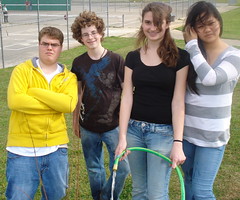
Tim Wellman, Connor Bacon, Emily Horan, Isabelle Vea: Class of 2012, Cmhs
Originally uploaded by trudeau
Kim Jong-il of South Korea and his threat to US interests in East Asia
On the face of it, there seems little reason why 23 million North Koreans should continue to support their "Dear Leader", says London newspaper The Telegraph. The country's economy has been devastated since the early 1990s and millions of people live on the edge of famine.
That has not deterred Kim from indulging his eccentric tastes. He allegedly imports £350,000 of cognac a year and eats lobster, caviar and sushi. He spent millions on a fleet of Mercedes Benz luxury cars and spends his time watching Hollywood movies such as Rambo or Friday the 13th.
No one inside North Korea would ever hear of this excess. Kim has banned mobile phones, newspapers, the internet and books. In 2004, he brought in a new criminal law, penalising anyone who tried to bring in outside music. Talking about his successor is banned too.
His ability to hold North Korea together, despite huge economic problems and public discontent, is a tribute both to his skill as a communicator and to his father's doctrine of Juche, or self-reliance.
The younger Kim wanted to be a movie director and famously kidnapped a South Korean film director and movie star to build the North Korean film industry. Even in 2006 he got involved in make a movie about a girl whose parents are scientists. This skill for storytelling and a certain visual flair has served him well.
Then there is Juche, the political doctrine that his father first introduced in the 1950s. According to Juche, North Koreans must be independent, economic self-sufficiency and self-reliance when it comes to defence. At the time time, the leader must be venerated.
The younger Kim, however, is more bellicose than his father, and regularly spends North Korea's budget on terrorism, rockets and nuclear development programmes when his people desperately need food. "That old economist's dilemma of guns or butter seems to have been played out quite literally in North Korea's case," said Aidan Foster-Carter, an expert on the region at Leeds University.
That has not deterred Kim from indulging his eccentric tastes. He allegedly imports £350,000 of cognac a year and eats lobster, caviar and sushi. He spent millions on a fleet of Mercedes Benz luxury cars and spends his time watching Hollywood movies such as Rambo or Friday the 13th.
No one inside North Korea would ever hear of this excess. Kim has banned mobile phones, newspapers, the internet and books. In 2004, he brought in a new criminal law, penalising anyone who tried to bring in outside music. Talking about his successor is banned too.
His ability to hold North Korea together, despite huge economic problems and public discontent, is a tribute both to his skill as a communicator and to his father's doctrine of Juche, or self-reliance.
The younger Kim wanted to be a movie director and famously kidnapped a South Korean film director and movie star to build the North Korean film industry. Even in 2006 he got involved in make a movie about a girl whose parents are scientists. This skill for storytelling and a certain visual flair has served him well.
Then there is Juche, the political doctrine that his father first introduced in the 1950s. According to Juche, North Koreans must be independent, economic self-sufficiency and self-reliance when it comes to defence. At the time time, the leader must be venerated.
The younger Kim, however, is more bellicose than his father, and regularly spends North Korea's budget on terrorism, rockets and nuclear development programmes when his people desperately need food. "That old economist's dilemma of guns or butter seems to have been played out quite literally in North Korea's case," said Aidan Foster-Carter, an expert on the region at Leeds University.
Thursday, March 12, 2009
Sixties Day on Fri, Mar 13: bring photos, dress in style
Sixties day celebrations amuse me because I was there in the late 60's and was a part of the alternative culture. The late 60's were a thrilling era but easy to misunderstand.
Some easy bits of perspective -
- the late 60's didn't really happen in the Deep South until the mid-to-late 70's. The South was pretty retarded when it came to new fashion.
- 60's style was mostly a big city phenomenon.
- On the straight side there were mini-skirts and they were shockingly short. On the hippie side were long skirts, peasant blouses, no bras, and moccasins instead of stacked heel shoes.
- Hindu style became popular. Guys and girls wore kurtas, light cotton tunics, over jeans with Indian sandals.
- Love beads were a mark of someone who did not really understand the deeper change that was occurring.
- Fabric belts and headbands were often crafted via macrame, creative knotting of string. Bandanas were commonly used as headbands.
- Tie-dye was part of the Do-It-Yourself hippie ethic.
- Wire frame glasses were important. I found a pair of my grandmother's glasses from the 1930's or 40's and used them.
- Dashikis, tunics that featured bright African patterns, were popular with Black Americans. Also, the Afro, a bush that could be picked out into a leonine mane, was widely worn.
- Army surplus clothing was cool. In fact, bell-bottom jeans as made by Levi's and other companies, were inspired by youths who wore bell-bottom sailor's pants.
- The Yin Yang symbol began to be integrated. Few people knew what it meant.
1. Wear something that fits dress code. Wild things from your family's closet might be brought in a box or bag and shown.
2. Choose 1 or 2 photos from album or yearbook of your relatives in1968. Or choose a couple of photos from a magazine, book or online site. Some of you will get to show and tell.
3. Food? We ate plain yogurt, drank tea and experimented with vegetarianism, as in brown rice w beans. Homemade bread as well as home-made yogurt. I'm afraid there's nothing exciting about classic hippie meals from the late 60's except - the illegal - poison mushrooms and hashish brownies.
Some easy bits of perspective -
- the late 60's didn't really happen in the Deep South until the mid-to-late 70's. The South was pretty retarded when it came to new fashion.
- 60's style was mostly a big city phenomenon.
- On the straight side there were mini-skirts and they were shockingly short. On the hippie side were long skirts, peasant blouses, no bras, and moccasins instead of stacked heel shoes.
- Hindu style became popular. Guys and girls wore kurtas, light cotton tunics, over jeans with Indian sandals.
- Love beads were a mark of someone who did not really understand the deeper change that was occurring.
- Fabric belts and headbands were often crafted via macrame, creative knotting of string. Bandanas were commonly used as headbands.
- Tie-dye was part of the Do-It-Yourself hippie ethic.
- Wire frame glasses were important. I found a pair of my grandmother's glasses from the 1930's or 40's and used them.
- Dashikis, tunics that featured bright African patterns, were popular with Black Americans. Also, the Afro, a bush that could be picked out into a leonine mane, was widely worn.
- Army surplus clothing was cool. In fact, bell-bottom jeans as made by Levi's and other companies, were inspired by youths who wore bell-bottom sailor's pants.
- The Yin Yang symbol began to be integrated. Few people knew what it meant.
1. Wear something that fits dress code. Wild things from your family's closet might be brought in a box or bag and shown.
2. Choose 1 or 2 photos from album or yearbook of your relatives in1968. Or choose a couple of photos from a magazine, book or online site. Some of you will get to show and tell.
3. Food? We ate plain yogurt, drank tea and experimented with vegetarianism, as in brown rice w beans. Homemade bread as well as home-made yogurt. I'm afraid there's nothing exciting about classic hippie meals from the late 60's except - the illegal - poison mushrooms and hashish brownies.
Wednesday, March 11, 2009
Indie work: Mahatma Gandhi and Ho Chi Minh
Compare the way that Gandhi forced the British out of India and the way that Ho Chi Minh saw to the expulsion of the French and the US from Vietnam. Cite the general dates and follow all the usual guidelines for a comparison essay.
Ho Chi Minh and guerilla warfare
Hồ Chí Minh (May 19, 1890 – September 2, 1969) was a Vietnamese Communist revolutionary and statesman who was Prime Minister of the Democratic Republic of Vietnam (North Vietnam) from 1946 to 1969, says Wikipedia.
Ho led the Viet Minh independence movement from 1941 onward, establishing the communist-governed Democratic Republic of Vietnam in 1945 and defeating the French Union in 1954 at Dien Bien Phu. He remained as the highly visible figurehead president until his death. He was named by Time Magazine as one of the 100 most influential people of the 20th century,
His victorious tactics against the French and the US included -
- the VC tunnel system provided secret routes across the country as well as places to hide, to give medical aid and to store supplies.
- guerilla warfare
* small combat units, no uniforms.
* no supply lines; depended on local people.
* sabotage and hit & run tactics.
* extensive use of punji sticks, foot traps, tiger traps, Bouncing Betty mines and other Improvised Explosive Devices (IED's).
Another factor that affected young US soldiers in Vietnam -
- opium
- hashish
Both were plentiful and cheap. Street vendors readily sold it to soldiers.
While not based on substantial studies, estimates are that 20 to 30% of the US forces occasionally toked up. Most literature also says that soldiers in combat zones were forced not to partake of herbal relaxation by their fellow soldiers; they were self-policing.
Ho led the Viet Minh independence movement from 1941 onward, establishing the communist-governed Democratic Republic of Vietnam in 1945 and defeating the French Union in 1954 at Dien Bien Phu. He remained as the highly visible figurehead president until his death. He was named by Time Magazine as one of the 100 most influential people of the 20th century,
His victorious tactics against the French and the US included -
- the VC tunnel system provided secret routes across the country as well as places to hide, to give medical aid and to store supplies.
- guerilla warfare
* small combat units, no uniforms.
* no supply lines; depended on local people.
* sabotage and hit & run tactics.
* extensive use of punji sticks, foot traps, tiger traps, Bouncing Betty mines and other Improvised Explosive Devices (IED's).
Another factor that affected young US soldiers in Vietnam -
- opium
- hashish
Both were plentiful and cheap. Street vendors readily sold it to soldiers.
While not based on substantial studies, estimates are that 20 to 30% of the US forces occasionally toked up. Most literature also says that soldiers in combat zones were forced not to partake of herbal relaxation by their fellow soldiers; they were self-policing.
Tuesday, March 10, 2009
Domino theory and a gorilla in the living room: the Vietnam conflict
Domino theory - Pres Eisenhower's fear that if communists were successful in taking over one Southeast Asian nation, that more nations would follow suit.
Gorilla in the living room - China.
US leaders knew that to provoke China into entering a conflict would be to unleash a giant foe.
Vietnam War Timeline from Infoplease.com
U.S., South Vietnam, and Allies versus
North Vietnam and National Liberation Front (Viet Cong).
1950
President Truman sends 35-man military advisory group to aid French fighting to maintain colonial power in Vietnam.
1954
After defeat of French at Dien Bien Phu, Geneva Agreements (July) provide for withdrawal of French and Vietminh to either side of demarcation zone (DMZ) pending reunification elections, which are never held. Presidents Eisenhower and Kennedy (from 1954 onward) send civilian advisers and, later, military personnel to train South Vietnamese.
1960
Communists form National Liberation Front in South.
1960–1963
U.S. military advisers in South Vietnam rise from 900 to 15,000.
1964
North Vietnamese torpedo boats reportedly attack U.S. destroyers in Gulf of Tonkin (Aug. 2). President Johnson orders retaliatory air strikes. Congress approves Gulf of Tonkin resolution (Aug. 7) authorizing president to take “all necessary measures” to win in Vietnam, allowing for the war's expansion.
1965
U.S. planes begin combat missions over South Vietnam. In June, 23,000 American advisers committed to combat. By end of year over 184,000 U.S. troops in area.
1966
B-52s bomb DMZ, reportedly used by North Vietnam for entry into South.
1968
U.S. has almost 525,000 men in Vietnam.
In Tet offensive (Jan.–Feb.), Viet Cong guerrillas attack Saigon, Hue, and some provincial capitals.
In My Lai massacre, American soldiers kill 300 Vietnamese villagers (March 16).
President Johnson orders halt to U.S. bombardment of North Vietnam (Oct. 31). Saigon and N.L.F. join U.S. and North Vietnam in Paris peace talks.
1969
President Nixon announces Vietnam peace offer (May 14)—begins troop withdrawals (June). Viet Cong forms Provisional Revolutionary Government.
U.S. Senate calls for curb on commitments (June 25). Ho Chi Minh, 79, North Vietnam president, dies (Sept. 3).
Massive demonstrations in U.S. protest or support war policies.
1970
U.S. troops invade Cambodia in order to destroy North Vietnamese sanctuaries (May 1).
1971
Congress bars use of combat troops, but not air power, in Laos and Cambodia (Jan. 1). South Vietnamese troops, with U.S. air cover, fail in Laos thrust. Many American ground forces withdrawn from Vietnam combat.
New York Times publishes Pentagon papers, classified material on expansion of war (June).
1972
Nixon responds to North Vietnamese drive across DMZ by ordering mining of North Vietnam ports and heavy bombing of Hanoi-Haiphong area (April 1). Nixon orders “Christmas bombing” of North to get North Vietnamese back to conference table (Dec.).
1973
President orders halt to offensive operations in North Vietnam (Jan. 15). Representatives of North and South Vietnam, U.S., and N.L.F. sign peace pacts in Paris, ending longest war in U.S. history (Jan. 27). Last American troops departed in their entirety (March 29).
1975
Full-scale warfare resumes. South Vietnam premier Nguyen Van Thieu resigns (April 21). South Vietnamese government surrenders to North Vietnam; U.S. Marine embassy guards and U.S. civilians and dependents evacuated (April 30). More than 140,000 Vietnamese refugees leave by air and sea, many to settle in U.S. Provisional Revolutionary Government takes control (June 6).
Glengarry
plot sum
charcters
actors
playwright
stim value
what didn't work for you
Gorilla in the living room - China.
US leaders knew that to provoke China into entering a conflict would be to unleash a giant foe.
Vietnam War Timeline from Infoplease.com
U.S., South Vietnam, and Allies versus
North Vietnam and National Liberation Front (Viet Cong).
1950
President Truman sends 35-man military advisory group to aid French fighting to maintain colonial power in Vietnam.
1954
After defeat of French at Dien Bien Phu, Geneva Agreements (July) provide for withdrawal of French and Vietminh to either side of demarcation zone (DMZ) pending reunification elections, which are never held. Presidents Eisenhower and Kennedy (from 1954 onward) send civilian advisers and, later, military personnel to train South Vietnamese.
1960
Communists form National Liberation Front in South.
1960–1963
U.S. military advisers in South Vietnam rise from 900 to 15,000.
1964
North Vietnamese torpedo boats reportedly attack U.S. destroyers in Gulf of Tonkin (Aug. 2). President Johnson orders retaliatory air strikes. Congress approves Gulf of Tonkin resolution (Aug. 7) authorizing president to take “all necessary measures” to win in Vietnam, allowing for the war's expansion.
1965
U.S. planes begin combat missions over South Vietnam. In June, 23,000 American advisers committed to combat. By end of year over 184,000 U.S. troops in area.
1966
B-52s bomb DMZ, reportedly used by North Vietnam for entry into South.
1968
U.S. has almost 525,000 men in Vietnam.
In Tet offensive (Jan.–Feb.), Viet Cong guerrillas attack Saigon, Hue, and some provincial capitals.
In My Lai massacre, American soldiers kill 300 Vietnamese villagers (March 16).
President Johnson orders halt to U.S. bombardment of North Vietnam (Oct. 31). Saigon and N.L.F. join U.S. and North Vietnam in Paris peace talks.
1969
President Nixon announces Vietnam peace offer (May 14)—begins troop withdrawals (June). Viet Cong forms Provisional Revolutionary Government.
U.S. Senate calls for curb on commitments (June 25). Ho Chi Minh, 79, North Vietnam president, dies (Sept. 3).
Massive demonstrations in U.S. protest or support war policies.
1970
U.S. troops invade Cambodia in order to destroy North Vietnamese sanctuaries (May 1).
1971
Congress bars use of combat troops, but not air power, in Laos and Cambodia (Jan. 1). South Vietnamese troops, with U.S. air cover, fail in Laos thrust. Many American ground forces withdrawn from Vietnam combat.
New York Times publishes Pentagon papers, classified material on expansion of war (June).
1972
Nixon responds to North Vietnamese drive across DMZ by ordering mining of North Vietnam ports and heavy bombing of Hanoi-Haiphong area (April 1). Nixon orders “Christmas bombing” of North to get North Vietnamese back to conference table (Dec.).
1973
President orders halt to offensive operations in North Vietnam (Jan. 15). Representatives of North and South Vietnam, U.S., and N.L.F. sign peace pacts in Paris, ending longest war in U.S. history (Jan. 27). Last American troops departed in their entirety (March 29).
1975
Full-scale warfare resumes. South Vietnam premier Nguyen Van Thieu resigns (April 21). South Vietnamese government surrenders to North Vietnam; U.S. Marine embassy guards and U.S. civilians and dependents evacuated (April 30). More than 140,000 Vietnamese refugees leave by air and sea, many to settle in U.S. Provisional Revolutionary Government takes control (June 6).
Glengarry
plot sum
charcters
actors
playwright
stim value
what didn't work for you
The caste system of India
Although generally identified with Hinduism, the caste system was also observed among followers of other religions in the Indian subcontinent, including some groups of Muslims and Christians, says Wikipedia.[1] The Indian Constitution has outlawed caste-based discrimination, in keeping with the socialist, secular, democratic principles that founded the nation.[2]
Caste barriers have mostly broken down in large cities,[3] though they persist in rural areas of the country. Nevertheless, the caste system, in various forms, continues to survive in modern India strengthened by a combination of social perceptions and divisive politics. [4][5]
The shastras mention four varnas:
the Brahmins (teachers, scholars and priests),
Kshatriyas (kings and warriors),
Vaishyas (traders), and
Shudras (agriculturists, service providers, and some artisan groups).
The Dalits, or the people outside the varna system, had the lowest social status. The Dalits, earlier referred to as "untouchables" by some, worked in what were seen as unhealthy, unpleasant or polluting jobs. In the past, the Dalits suffered from social segregation and restrictions, in addition to extreme poverty. They were not allowed temple worship with others, nor water from the same sources. Persons of higher castes would not interact with them. If somehow a member of a higher caste came into physical or social contact with an untouchable, the member of the higher caste was defiled, and had to bathe thoroughly to purge him or herself of the impurity. Social discrimination developed even among the Dalits. Upper sub-castes among Dalits, like dhobi, nai etc., would not interact with lower-order Bhangis, who were described as "outcasts even among outcastes".
The caste system is far from a rigid system in which the position of each component caste is fixed for all time. Movement has always been possible, and especially in the middle regions of the hierarchy. It was always possible for groups born into a lower caste to "rise to a higher position by adopting vegetarianism and teetotalism" i.e adopt the customs of the higher castes. While theoretically "forbidden", the process was not uncommon in practice.
Caste barriers have mostly broken down in large cities,[3] though they persist in rural areas of the country. Nevertheless, the caste system, in various forms, continues to survive in modern India strengthened by a combination of social perceptions and divisive politics. [4][5]
The shastras mention four varnas:
the Brahmins (teachers, scholars and priests),
Kshatriyas (kings and warriors),
Vaishyas (traders), and
Shudras (agriculturists, service providers, and some artisan groups).
The Dalits, or the people outside the varna system, had the lowest social status. The Dalits, earlier referred to as "untouchables" by some, worked in what were seen as unhealthy, unpleasant or polluting jobs. In the past, the Dalits suffered from social segregation and restrictions, in addition to extreme poverty. They were not allowed temple worship with others, nor water from the same sources. Persons of higher castes would not interact with them. If somehow a member of a higher caste came into physical or social contact with an untouchable, the member of the higher caste was defiled, and had to bathe thoroughly to purge him or herself of the impurity. Social discrimination developed even among the Dalits. Upper sub-castes among Dalits, like dhobi, nai etc., would not interact with lower-order Bhangis, who were described as "outcasts even among outcastes".
The caste system is far from a rigid system in which the position of each component caste is fixed for all time. Movement has always been possible, and especially in the middle regions of the hierarchy. It was always possible for groups born into a lower caste to "rise to a higher position by adopting vegetarianism and teetotalism" i.e adopt the customs of the higher castes. While theoretically "forbidden", the process was not uncommon in practice.
Monday, March 09, 2009
Jean Despujols and paintings of Indochina, as seen in Meadows Museum of Art, Shreveport
Jean Despujols gained renown early in his career as an artist when he won the Prix de Rome scholarship in 1914, says Wikipedia. In 1936, the Société des Artistes Coloniaux in Paris selected Despujols to travel throughout French Indochina to record his impressions on canvas and paper.
He traveled in Vietnam, Cambodia and Laos and painted and sketched some 360 works from '36 to '38. He captured the people, landscapes and still lifes.
He moved to Shreveport in 1941, the year the Germans took over Paris.
His evocative works were featured at the Smithsonian in 1950 and in National geographic magazine in 1951. Despujols worked as a portrait painter as well as fine arts painter in Shreveport. He died in 1965.
In 1969 his Indochina works became part of the permanent collection of the Meadows Museum of Art at Centenary College in Shreveport, Louisiana.
He traveled in Vietnam, Cambodia and Laos and painted and sketched some 360 works from '36 to '38. He captured the people, landscapes and still lifes.
He moved to Shreveport in 1941, the year the Germans took over Paris.
His evocative works were featured at the Smithsonian in 1950 and in National geographic magazine in 1951. Despujols worked as a portrait painter as well as fine arts painter in Shreveport. He died in 1965.
In 1969 his Indochina works became part of the permanent collection of the Meadows Museum of Art at Centenary College in Shreveport, Louisiana.
Angkor Wat, communism and a sidewalk cafe: Southeast Asia
Today's map featured . . .
- Thailand, the city of Bangkok and palm trees along the coast.
- Cambodia and the vast temple complex called Angkor Wat )w bullet-shaped spires).
- Laos
- Malay peninsula - think of the rapacious pirates!
- Vietnam
- the capitol city of the north, Hanoi - once capitol of
Ho Chi Minh and the communist forces.
- palm trees along the coast of the South China Sea (Pacific).
- the capitol of the south, Ho Chi Minh City (Saigon), symbolized
by a sidewalk cafe in the style of Paris.
- China, the mother nation of the region
Discussions . . .
- See the NY Times for a reporter's story (Nicholas Kristof) on rescuing 2 young prostitutes from the brothels of Bangkok.
- Opium cultivation and sales by the impoverished mountain peoples all across Asia.
- Tailoring of suits and dresses in fine fabrics for bargain prices.
- French occupation of this region over a 150-year period. The French profited from the silk, coffee and rubber grown in the region.
- Thailand, the city of Bangkok and palm trees along the coast.
- Cambodia and the vast temple complex called Angkor Wat )w bullet-shaped spires).
- Laos
- Malay peninsula - think of the rapacious pirates!
- Vietnam
- the capitol city of the north, Hanoi - once capitol of
Ho Chi Minh and the communist forces.
- palm trees along the coast of the South China Sea (Pacific).
- the capitol of the south, Ho Chi Minh City (Saigon), symbolized
by a sidewalk cafe in the style of Paris.
- China, the mother nation of the region
Discussions . . .
- See the NY Times for a reporter's story (Nicholas Kristof) on rescuing 2 young prostitutes from the brothels of Bangkok.
- Opium cultivation and sales by the impoverished mountain peoples all across Asia.
- Tailoring of suits and dresses in fine fabrics for bargain prices.
- French occupation of this region over a 150-year period. The French profited from the silk, coffee and rubber grown in the region.
Sunday, March 08, 2009
The Sitar and the esteemed sitarist, Ravi Shankar
The sitar (Hindi: सितार, Urdu: ستار, Persian: سی تار ) is a plucked stringed instrument, says Wikipedia. It uses sympathetic strings along with a long hollow neck and a gourd resonating chamber to produce a very rich sound with complex harmonic resonance.
Predominantly used in Hindustani classical, sitar has been ubiquitous in Hindustani classical music since the Middle Ages.
A distinctive feature of the sitar is the curved frets, which are movable, allowing fine variation in tuning, and raised so that sympathetic strings can run underneath the frets. A typical sitar, depending on the style, can have 21, 22 or 23 strings. Among these strings are six or seven playable strings, which are situated over the frets.
Pandit Ravi Shankar (born April 7, 1920) is a Bengali Indian sitar player and composer.
He has been a longtime musical collaborator of tabla-players Ustad Allah Rakha, Kishen Maharaj and intermittently also of sarod-player Ustad Ali Akbar Khan. His collaborations with violinist Yehudi Menuhin, film maker Satyajit Ray, and The Beatles (in particular, George Harrison) added to his international reputation.
He has received many awards throughout his career, including three Grammy Awards and an Academy Award nomination.
Predominantly used in Hindustani classical, sitar has been ubiquitous in Hindustani classical music since the Middle Ages.
A distinctive feature of the sitar is the curved frets, which are movable, allowing fine variation in tuning, and raised so that sympathetic strings can run underneath the frets. A typical sitar, depending on the style, can have 21, 22 or 23 strings. Among these strings are six or seven playable strings, which are situated over the frets.
Pandit Ravi Shankar (born April 7, 1920) is a Bengali Indian sitar player and composer.
He has been a longtime musical collaborator of tabla-players Ustad Allah Rakha, Kishen Maharaj and intermittently also of sarod-player Ustad Ali Akbar Khan. His collaborations with violinist Yehudi Menuhin, film maker Satyajit Ray, and The Beatles (in particular, George Harrison) added to his international reputation.
He has received many awards throughout his career, including three Grammy Awards and an Academy Award nomination.
India review quiz on Thu, Mar 12, in addition to scoring 5 Pres in Vietnam project
India review 1
1. Hindi greeting: a) Namaste’ b) Ni hau c) Moshimoshi d) Salaam aleikum e) Shalom f) Yo.
2. Hindi is the culture and religion, Hindu is the language. T / F
3. According to the RMQRWA, India’s population is about a) 990 million b) 1.3 billion c) 2.5 billion d) 3 billion.
4. People who study populations and make predictions about population changes: a) anthropologists b) demographers c) historians d) graphologists.
5. Civilization in Central Asia began in the __ river basin, according to World Book. a) Indus b) Ganges c) Nile d) Tigris & Euphrates.
6. Mt. Everest lies on the borders of a) Nepal & China b) India & China c) China & Tibet.
7. Which has a greater metropolitan area? a) Mumbai b) Kolkata c) New York City d) Beijing?
8. Sanskrit, Bengali, Gujarati, Kashmiri and Punjabi are __. a) regions b) languages c) types of cuisine d) Hindu gods.
9. India has approximately half the land area of the US but more than 3 times the US’ population. T / F
10. The 2 principal religions of India: a) Christian, Islam b) Islam, Hindu c) Hindu, Jewish
d) Hindu, Christian e) Sikhs, Hindus.
11. The famous spice mixture of Indian cooking: a) curry b) tandoori c) yogurt d) chili powder.
12. The caste system has been responsible for a long history of a) good meals b) law and order c) lavish architecture d) railways and ports.
13. Not one of the three Islamic nations on our recent map: a) Bangladesh b) Pakistan c) Afghanistan d) Nepal.
14. The historic name for Mumbai: __ a) Calcutta b) Kolkata c) Ceylon d) Bombay e) Agra.
15. The multi-stringed instrument that gives a signature sound to the music of India: a) oud b) sitar c) tambourine d) bindi e) melodica.
16. Some 60 years ago India was partitioned so that Muslims would have a home away from the antagonistic Hindus. Today there are fewer than 10% of Muslims in India. They live in Pakistan or Bangladesh. T / F
17. Mohandas said to Kasturba: “Let’s go to a movie tonight. Put a garland of jasmine round your neck and a __ on your forehead.” a) samsara b) ganesh c) bindi d) sitar.
18. Bangalore is a city of high tech workers, according to the NY Times. The most notable US company maintaing a large workforce there is a) Microsoft b) Apple c) Dell d) Intel e) Sun Microsystems.
19. Famous for their beards and turbans, this Indian religious group is centered in the Punjab, near the city of Amritsar: a) Punjabis b) Jains c) Hindus d) Muslims e) Sikhs.
20. The science behind an understanding of the Himalayas: a) vulcanology
b) demography c) plate tectonics d) archaeology.
1. Hindi greeting: a) Namaste’ b) Ni hau c) Moshimoshi d) Salaam aleikum e) Shalom f) Yo.
2. Hindi is the culture and religion, Hindu is the language. T / F
3. According to the RMQRWA, India’s population is about a) 990 million b) 1.3 billion c) 2.5 billion d) 3 billion.
4. People who study populations and make predictions about population changes: a) anthropologists b) demographers c) historians d) graphologists.
5. Civilization in Central Asia began in the __ river basin, according to World Book. a) Indus b) Ganges c) Nile d) Tigris & Euphrates.
6. Mt. Everest lies on the borders of a) Nepal & China b) India & China c) China & Tibet.
7. Which has a greater metropolitan area? a) Mumbai b) Kolkata c) New York City d) Beijing?
8. Sanskrit, Bengali, Gujarati, Kashmiri and Punjabi are __. a) regions b) languages c) types of cuisine d) Hindu gods.
9. India has approximately half the land area of the US but more than 3 times the US’ population. T / F
10. The 2 principal religions of India: a) Christian, Islam b) Islam, Hindu c) Hindu, Jewish
d) Hindu, Christian e) Sikhs, Hindus.
11. The famous spice mixture of Indian cooking: a) curry b) tandoori c) yogurt d) chili powder.
12. The caste system has been responsible for a long history of a) good meals b) law and order c) lavish architecture d) railways and ports.
13. Not one of the three Islamic nations on our recent map: a) Bangladesh b) Pakistan c) Afghanistan d) Nepal.
14. The historic name for Mumbai: __ a) Calcutta b) Kolkata c) Ceylon d) Bombay e) Agra.
15. The multi-stringed instrument that gives a signature sound to the music of India: a) oud b) sitar c) tambourine d) bindi e) melodica.
16. Some 60 years ago India was partitioned so that Muslims would have a home away from the antagonistic Hindus. Today there are fewer than 10% of Muslims in India. They live in Pakistan or Bangladesh. T / F
17. Mohandas said to Kasturba: “Let’s go to a movie tonight. Put a garland of jasmine round your neck and a __ on your forehead.” a) samsara b) ganesh c) bindi d) sitar.
18. Bangalore is a city of high tech workers, according to the NY Times. The most notable US company maintaing a large workforce there is a) Microsoft b) Apple c) Dell d) Intel e) Sun Microsystems.
19. Famous for their beards and turbans, this Indian religious group is centered in the Punjab, near the city of Amritsar: a) Punjabis b) Jains c) Hindus d) Muslims e) Sikhs.
20. The science behind an understanding of the Himalayas: a) vulcanology
b) demography c) plate tectonics d) archaeology.
Friday, March 06, 2009
Crepe Myrtles need more water! Garden hoses - linked - needed at Cmhs
Got garden hoses you can loan us for a couple of weeks? The bucket brigade was fun and instructive but did not give the newly-planted crepe myrtles enough water. Because the rain has not cooperated, the little trees are in dire need of water.
If you can meet me at Cmhs on Sat morning - I'm briefly meeting with 8th grade parents during placement testing - I'll hook up the hoses and oversee the watering. Otherwise, you can drop off hoses (please put an ID tag on them if you want them back) at the school and I'll make it happen next week.
My cell is 272-6045.
If you can meet me at Cmhs on Sat morning - I'm briefly meeting with 8th grade parents during placement testing - I'll hook up the hoses and oversee the watering. Otherwise, you can drop off hoses (please put an ID tag on them if you want them back) at the school and I'll make it happen next week.
My cell is 272-6045.
Thursday, March 05, 2009
Using a primary source: Vietnam veteran interview due Th, March 19
These Vietnam veteran questions are designed to create a low-stress interview. The primary reason for this interview is to give you experience in using a Primary Source. The material you gather will not come from a book or online entry; it will come from a person who was an eye witness. You will be gathering a bit of evidence as a student historian.
The paper must be typed but may be written in a simple Q and A style.
1. Name and your service branch?
2. Year(s) you served in Vietnam?
3. Your responsibilities in the service while in ‘Nam.
4. Locations you visited in Vietnam. In which place did you stay the longest?
5. The geography of the Vietnam you observed.
6. Climate?
7. Describe the people of Vietnam, both physically & psychologically.
8. Changes in your attitude toward the US in Vietnam. (optional)
9. What should teens learn about the conflict?
10. Your favorite movie or book about ‘Nam? (optional)
You may have the flexibility to use some 8 of the questions as you see fit. if the vet declines to interview an item, it's OK. Simply record his reason. If the vet seems talkative, please ask additional questions. This project becomes a part of history. It might be valuable in the future in American History class or another project.
Recording the interview electronically is a good idea. If you try to write down the responses both you and the interviewee might be frustrated. It is not easy to write down all the words that flow in the average interview.
Possibilities:
* A cassette recorder.
* Using a mic and simple software program to record into your computer.
* Record via your videocamera. If the vet does not want to be on camera, put on the lens cap. The voice will still be recorded.
Guidelines:
* Stop the interview and test the recording after a minute. It is easy to get weak sound and be frustrated later.
* Place the mic as close to the person's mouth as possible.
The paper must be typed but may be written in a simple Q and A style.
1. Name and your service branch?
2. Year(s) you served in Vietnam?
3. Your responsibilities in the service while in ‘Nam.
4. Locations you visited in Vietnam. In which place did you stay the longest?
5. The geography of the Vietnam you observed.
6. Climate?
7. Describe the people of Vietnam, both physically & psychologically.
8. Changes in your attitude toward the US in Vietnam. (optional)
9. What should teens learn about the conflict?
10. Your favorite movie or book about ‘Nam? (optional)
You may have the flexibility to use some 8 of the questions as you see fit. if the vet declines to interview an item, it's OK. Simply record his reason. If the vet seems talkative, please ask additional questions. This project becomes a part of history. It might be valuable in the future in American History class or another project.
Recording the interview electronically is a good idea. If you try to write down the responses both you and the interviewee might be frustrated. It is not easy to write down all the words that flow in the average interview.
Possibilities:
* A cassette recorder.
* Using a mic and simple software program to record into your computer.
* Record via your videocamera. If the vet does not want to be on camera, put on the lens cap. The voice will still be recorded.
Guidelines:
* Stop the interview and test the recording after a minute. It is easy to get weak sound and be frustrated later.
* Place the mic as close to the person's mouth as possible.
5 US Presidents in Vietnam timeline - due Th, March 12
Vietnam Conflict Timeline project:
- 15 pts.
- based on brief, bulleted notes.
- due Th, Mar 12.
- total of 2 typed pages.
Include -
a. 5 presidents' images, dates & brief bios
b. brief descriptions of 5 of the following terms
Geneva Accord
Gulf of Tonkin Resolution
Ho Chi Minh
Asian guerilla warfare
Anti-war protest movement
NVA & VC in Tet Offensive
Counterculture movement
My Lai village massacre
Vietnamese refugees: "boat people"
Mekong River
Armaments of the Vietnam conflict
The goal is to give you an overview before you meet your veteran for the primary source interview.
Take care for -
- titling
- documentation
- grammar, construction
- editing and brevity
- must be typed.
- 15 pts.
- based on brief, bulleted notes.
- due Th, Mar 12.
- total of 2 typed pages.
Include -
a. 5 presidents' images, dates & brief bios
b. brief descriptions of 5 of the following terms
Geneva Accord
Gulf of Tonkin Resolution
Ho Chi Minh
Asian guerilla warfare
Anti-war protest movement
NVA & VC in Tet Offensive
Counterculture movement
My Lai village massacre
Vietnamese refugees: "boat people"
Mekong River
Armaments of the Vietnam conflict
The goal is to give you an overview before you meet your veteran for the primary source interview.
Take care for -
- titling
- documentation
- grammar, construction
- editing and brevity
- must be typed.
Wednesday, March 04, 2009
The Persian mausoleum called the Taj Mahal
The Taj Mahal is a mausoleum located in Agra, India, built by Mughal Emperor Shah Jahan in memory of his favorite wife, Mumtaz Mahal.
The Taj Mahal (also "the Taj") is considered the finest example of Mughal architecture, a style that combines elements from Persian, Ottoman, Indian, and Islamic architectural styles, saith Wikipedia.
While the white domed marble mausoleum is its most familiar component, the Taj Mahal is actually an integrated complex of structures. Building began around 1632 and was completed around 1653, and employed thousands of artisans and craftsmen.
In 1631, Shah Jahan, emperor during the Mughal empire's period of greatest prosperity, was griefstricken when his third wife, Mumtaz Mahal, died during the birth of their fourteenth child, Gauhara Begum.[4] The court chronicles of Shah Jahan's grief illustrates the love story traditionally held as an inspiration for Taj Mahal.[5] [6] The construction of Taj Mahal begun soon after Mumtaz's death with the principal mausoleum completed in 1648.
The complex includes
- pools
- gardens
- gatehouse
- mosque
- guesthouse
Vocab
- symmetry
- Arabesques
- fusion of Muslim-Persian-Indian design
- Mughal becomes the English word, mogul.
- philanthropist
- gemstones of India
- mortar & pestle
The Taj Mahal (also "the Taj") is considered the finest example of Mughal architecture, a style that combines elements from Persian, Ottoman, Indian, and Islamic architectural styles, saith Wikipedia.
While the white domed marble mausoleum is its most familiar component, the Taj Mahal is actually an integrated complex of structures. Building began around 1632 and was completed around 1653, and employed thousands of artisans and craftsmen.
In 1631, Shah Jahan, emperor during the Mughal empire's period of greatest prosperity, was griefstricken when his third wife, Mumtaz Mahal, died during the birth of their fourteenth child, Gauhara Begum.[4] The court chronicles of Shah Jahan's grief illustrates the love story traditionally held as an inspiration for Taj Mahal.[5] [6] The construction of Taj Mahal begun soon after Mumtaz's death with the principal mausoleum completed in 1648.
The complex includes
- pools
- gardens
- gatehouse
- mosque
- guesthouse
Vocab
- symmetry
- Arabesques
- fusion of Muslim-Persian-Indian design
- Mughal becomes the English word, mogul.
- philanthropist
- gemstones of India
- mortar & pestle
Tata Nano, The World's Cheapest Car, and it's a product of India
The CEO of Tata Group, Mr. Ratan Tata, was able to keep his promise and deliver a car for Rs 1,00,000 ($2500), the Nano, with help from some 100 component manufacturers, says Wikipedia.
The cheapest car in the world was put together in India through collaborative engineering happened in total secrecy for over three years.
For more than 900 million Indians, who live ordinary lives, this is a rare moment when they feel like they are being taken care of by the rich and the mighty class. The company may be making a humble profit of only Rs 4,000 per Tata Nano, but life in globalization is about ideas plus profit.
The car has no passenger-side mirror, central locking, or power steering. It has only one windshield wiper. Air Conditioning is available only in deluxe versions. The price target was achieved by sheer design improvisation and not cutting corners on essentials.
Their motto was simple : make things smaller and lighter, do away with superficial parts and change the material wherever possible.
The cheapest car in the world was put together in India through collaborative engineering happened in total secrecy for over three years.
For more than 900 million Indians, who live ordinary lives, this is a rare moment when they feel like they are being taken care of by the rich and the mighty class. The company may be making a humble profit of only Rs 4,000 per Tata Nano, but life in globalization is about ideas plus profit.
The car has no passenger-side mirror, central locking, or power steering. It has only one windshield wiper. Air Conditioning is available only in deluxe versions. The price target was achieved by sheer design improvisation and not cutting corners on essentials.
Their motto was simple : make things smaller and lighter, do away with superficial parts and change the material wherever possible.
Tuesday, March 03, 2009
Trudeau's Writer's Workshop on Wed after school til 4:15 pm
Writer's Workshop is designed for students who need to boost their scores and skills. In the 40-minute session I can give a small group of students personal attention and indie points for work done on the premises.
While I like to focus on students' skills of research and composition, I will be happy to go over old tests and offer help in any area of social studies work.
If you would like to take advantage of a Wednesday session (adjusted because of math tutoring after school on Tues), please email me or tell me during class. Every now and then I will have a meeting or parent conference on Wed but basically I am in my classroom nearly every day til 4 pm. So, if you would like to request Mon, Tues or Fri (Thurs I have Picasso Digital Arts Club - and you are welcome to join that), email me: trudeau@earthlink.net.
Or leave a message at Cmhs: 221-2501.
While I like to focus on students' skills of research and composition, I will be happy to go over old tests and offer help in any area of social studies work.
If you would like to take advantage of a Wednesday session (adjusted because of math tutoring after school on Tues), please email me or tell me during class. Every now and then I will have a meeting or parent conference on Wed but basically I am in my classroom nearly every day til 4 pm. So, if you would like to request Mon, Tues or Fri (Thurs I have Picasso Digital Arts Club - and you are welcome to join that), email me: trudeau@earthlink.net.
Or leave a message at Cmhs: 221-2501.
Two great rivers: the Ganges and the Indus
The Ganges (also Ganga) is the 1,560 mi river that rises in the western Himalayas and drains into the delta in the Bay of Bengal, says Wikipedia.
It has long been considered a holy river by Hindus and worshiped as the goddess Ganga in Hinduism.
The Ganges and its tributaries drain a fertile basin that supports one of the world's highest density of humans. The average depth of river is 52 feet (16 m) and maximum depth is 100 feet (30 m).
The Indus is the longest river in Pakistan and the twenty-first largest river in the world. It is often considered the life-line of Pakistan by the people of that country.
The Europeans used the name "India" for the entire Indian Subcontinent based on Indos, the Greek appellation of this river.
Originating in the Tibetan plateau, the river runs a course through Jammu and Kashmir in India and the Northern Areas, flowing in a southerly direction along the entire length of the country, to merge into the Arabian Sea near Pakistan's port city of Karachi.
It has long been considered a holy river by Hindus and worshiped as the goddess Ganga in Hinduism.
The Ganges and its tributaries drain a fertile basin that supports one of the world's highest density of humans. The average depth of river is 52 feet (16 m) and maximum depth is 100 feet (30 m).
The Indus is the longest river in Pakistan and the twenty-first largest river in the world. It is often considered the life-line of Pakistan by the people of that country.
The Europeans used the name "India" for the entire Indian Subcontinent based on Indos, the Greek appellation of this river.
Originating in the Tibetan plateau, the river runs a course through Jammu and Kashmir in India and the Northern Areas, flowing in a southerly direction along the entire length of the country, to merge into the Arabian Sea near Pakistan's port city of Karachi.
Gandhi's odyssey
Gandhi's odyssey encompassed the following . . .
- Porbandar, his birthplace
- London, for law school
- South Africa, for 20 years of protest against the British treatment of the Indian workers living in S. Af.
- Mumbai, city of return to India.
- New Delhi, the capital, to meet with his political allies.
- Kolkata, to help the nearby farmers who were being exploited by British landowners.
- Amritsar, where the massacre of un-armed Sikhs by British soldiers drew Gandhi in 1919.
- Porbandor, focus of the 240-mile march that initiated the Salt tax Protest in 1925.
- Kolata, site of the Hindu-Muslim rioting that accompanied the British exit from India in 1947.
Vocab
- annex - to add territory to your nation or city . . .
- partition - to make a wall or separation between two regions . . .
- Porbandar, his birthplace
- London, for law school
- South Africa, for 20 years of protest against the British treatment of the Indian workers living in S. Af.
- Mumbai, city of return to India.
- New Delhi, the capital, to meet with his political allies.
- Kolkata, to help the nearby farmers who were being exploited by British landowners.
- Amritsar, where the massacre of un-armed Sikhs by British soldiers drew Gandhi in 1919.
- Porbandor, focus of the 240-mile march that initiated the Salt tax Protest in 1925.
- Kolata, site of the Hindu-Muslim rioting that accompanied the British exit from India in 1947.
Vocab
- annex - to add territory to your nation or city . . .
- partition - to make a wall or separation between two regions . . .
Monday, March 02, 2009
Spinning Wheels: the ancient way to make thread and to make cloth
Gandhi encouraged making Homspun so as to stop the British from exploiting the people of India by having a monopoly on cloth goods.
vocab
- Viceroy
- Om
- Kolkata
- Chennai
- Sri Lanka
- Sanskrit
- kurta
vocab
- Viceroy
- Om
- Kolkata
- Chennai
- Sri Lanka
- Sanskrit
- kurta
Quizzes on Thurs: India and neighbors map and open notes on the movie Gandhi
See the questions in a study guide on the movie Gandhi that are already posted.
Map: 10 items
include
- 3 seas
- 4 nations
- 3 cities
Map: 10 items
include
- 3 seas
- 4 nations
- 3 cities
The Hindu trinity: Shiva, Vishnu and Brahma
Brahma is the Hindu god (deva) of creation and one of the Trimurti, the others being Vishnu and Shiva.
He is not to be confused with the Supreme Cosmic Spirit in Hindu Vedanta philosophy known as Brahman.
Brahmā's consort is Saraswati, the goddess of learning.
Although Brahma is one of the three major gods in Hinduism, few Hindus actually worship him. India today has very few temples dedicated to Brahma alone as opposed to the tens of thousands of temples dedicated to the other deities in the Trimurti, namely Vishnu and Shiva.
Brahma is traditionally depicted with four heads and four faces and four arms. With each head he continually recites one of the four Vedas. He is often depicted with a white beard (especially in North India), indicating the near eternal nature of his existence. He is shown as having four arms, with none holding a weapon, unlike most other Hindu Gods.
Related words:
- Brahmin - person of the highest caste
- brahmin - in English, a person of a family that is wealthy and seems noble (Ex, the Rockefellers, the Kennedys).
- The Brahman (named for the sacred cow of Hinduism) or Brahma is a breed of Zebu cattle (Bos primigenius indicus), later exported from India to the rest of the world.
He is not to be confused with the Supreme Cosmic Spirit in Hindu Vedanta philosophy known as Brahman.
Brahmā's consort is Saraswati, the goddess of learning.
Although Brahma is one of the three major gods in Hinduism, few Hindus actually worship him. India today has very few temples dedicated to Brahma alone as opposed to the tens of thousands of temples dedicated to the other deities in the Trimurti, namely Vishnu and Shiva.
Brahma is traditionally depicted with four heads and four faces and four arms. With each head he continually recites one of the four Vedas. He is often depicted with a white beard (especially in North India), indicating the near eternal nature of his existence. He is shown as having four arms, with none holding a weapon, unlike most other Hindu Gods.
Related words:
- Brahmin - person of the highest caste
- brahmin - in English, a person of a family that is wealthy and seems noble (Ex, the Rockefellers, the Kennedys).
- The Brahman (named for the sacred cow of Hinduism) or Brahma is a breed of Zebu cattle (Bos primigenius indicus), later exported from India to the rest of the world.
Basic cooking of India: a Potato and Vegetable Curry
Gandhi was an ardent vegetarian but many Hindus eat meat and are not at all vegetarians. The easiest was to make a signature dish of India is to cook one with curry powder. Chicken curry and shrimp curry are popular in the US.
Curry powder is a mixture of spices of widely varying composition developed by the British during their colonial rule of India, says Wikipedia.
It was blended to take the taste of Indian food home, without having to utilize fresh spices. As a result "curry powder" in the Western world has a fairly standardized taste, but there are many different curry flavors in India.
Most recipes and producers of curry powder usually include coriander, turmeric, cumin, and fenugreek in their blends. Depending on the recipe, additional ingredients such as ginger, garlic, fennel seed, cinnamon, clove, mustard seed, green cardamom, black cardamom, mace, nutmeg, red pepper, long pepper, and black pepper may also be added.
Curry powder is a mixture of spices of widely varying composition developed by the British during their colonial rule of India, says Wikipedia.
It was blended to take the taste of Indian food home, without having to utilize fresh spices. As a result "curry powder" in the Western world has a fairly standardized taste, but there are many different curry flavors in India.
Most recipes and producers of curry powder usually include coriander, turmeric, cumin, and fenugreek in their blends. Depending on the recipe, additional ingredients such as ginger, garlic, fennel seed, cinnamon, clove, mustard seed, green cardamom, black cardamom, mace, nutmeg, red pepper, long pepper, and black pepper may also be added.
Subscribe to:
Posts (Atom)
